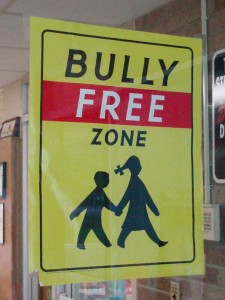Understanding Bullying: The “What,” “Where,” “Who,” and “When” of Bullying
Christian Counselor Seattle
Part 1 of a 3-Part Series
 A smaller boy gets pummeled in the schoolyard after refusing to give what appears to be a larger, domineering boy his lunch money. An unassuming, plain-looking girl is the subject of jeers and stares because the “mean girls” have spread an awful rumor about her. The familiarity of stories like these speak to the unfortunate reality that bullying is not an unfamiliar concept.
A smaller boy gets pummeled in the schoolyard after refusing to give what appears to be a larger, domineering boy his lunch money. An unassuming, plain-looking girl is the subject of jeers and stares because the “mean girls” have spread an awful rumor about her. The familiarity of stories like these speak to the unfortunate reality that bullying is not an unfamiliar concept.
The Prevalence of Bullying
Bullying is not a new phenomenon, but in the last few decades it has received significant attention, both in the media and by researchers and lawmakers. In a review of the last 40 years of bullying research, Hymel and Swearer (2015) found that prevalence rates for bullying varied across studies, with 10-33% of students reporting being bullied by peers and 5-13% reporting that they had bullied others. Given the wide range of prevalence rates found in these studies, it is difficult to make exact predictions regarding how many students in a given school are actually involved in bullying. But we can loosely estimate that, in a group of 100 students, it is possible that at least 10 have been bullied and at least 5 have been the perpetrators of bullying. These studies also found that reports of physical bullying have decreased, but reports of online harassment have increased (Hymel & Swearer, 2015).
This article is the first in a three-part series on bullying that considers current research findings and provides practical information to help you care for your school-aged child. Part 1 addresses the “what,” “where,” “who,” and “when” of bullying, and provides a brief overview of the phenomenon. Part 2 explores the “why” of bullying, and looks at the potential causes of bullying. Finally, Part 3 of this article series discusses the potential effects of bullying and provides recommendations for parents who believe that their child is involved in bullying.
“What” is Bullying?
The US Department of Health and Human Services defines bullying as unwanted, aggressive behavior among school-aged children that involves a real or perceived power imbalance. The behavior is repeated, or has the potential to be repeated, over time (http://www.stopbullying.gov/what-is-bullying/definition).
In 2010, a legislative bill was passed in Washington State that “prohibits harassment, intimidation, or bullying (HIB) in our schools” (http://www.k12.wa.us/SafetyCenter/BullyingHarassment/default.aspx).
 Washington State law does not differentiate between the terms “harassment,” “intimidation,” and “bullying.” It provides a singular definition for all three terms, which is well summarized by OSPI as any intentionally-written message or image—including those that are electronically transmitted—verbal, or physical act, including but not limited to one shown to be motivated by race, color, religion, ancestry, national origin, gender, sexual orientation, including gender expression or identity, mental or physical disability, or other distinguishing characteristics, when an act:
Washington State law does not differentiate between the terms “harassment,” “intimidation,” and “bullying.” It provides a singular definition for all three terms, which is well summarized by OSPI as any intentionally-written message or image—including those that are electronically transmitted—verbal, or physical act, including but not limited to one shown to be motivated by race, color, religion, ancestry, national origin, gender, sexual orientation, including gender expression or identity, mental or physical disability, or other distinguishing characteristics, when an act:
- Physically harms a student or damages the student’s property.
- Has the effect of substantially interfering with a student’s education.
- Is so severe, persistent, or pervasive that it creates an intimidating or threatening educational environment.
- Has the effect of substantially disrupting the orderly operation of the school. (http://www.k12.wa.us/SafetyCenter/BullyingHarassment/default.aspx)
“Where” Does Bullying Happen?
Bullying can occur inside the school, but it can also occur outside of school often through the use of the Internet and social media (i.e., cyberbullying).
“Who” is Involved in Bullying?
Anyone can be involved in bullying—regardless of gender, physical size, race, religion, social status amongst one’s peers, level of social intelligence, etc.
The psychological literature refers to the different “players” in bullying as “victims,” “bullies, “bully-victims” (i.e., those who bully, but are also victimized), and “bystanders” (i.e., those who witness bullying, but are not directly involved in it).
Studies have found that boys are more likely to report being bullies than girls are, while girls are more likely to report being victims of bullying than boys are (Hymel & Swearer, 2015).
“When” Does Bullying Happen?
 Bullying can occur as early as preschool, but the pre-teen years (i.e., middle school) seem to be when bullying reaches its peak. The prevalence rates then decline in high school (Hymel & Swearer, 2015).
Bullying can occur as early as preschool, but the pre-teen years (i.e., middle school) seem to be when bullying reaches its peak. The prevalence rates then decline in high school (Hymel & Swearer, 2015).
Throughout their school-age years, children are growing physically, mentally, and socially. As they grow taller and stronger, they are also building their academic skills, exploring their identities, and learning how relationships work. Children are navigating both the changes inside of them and those occurring in their external world (e.g., changes in school, family, extracurricular activities). In this context, bullying can present an added challenge.
Christian Counseling to Help You Deal with Bullying
If your child is being bullied or is bullying others, you might be feeling confused, angry, or even helpless. As a Christian counselor, my hope is that this series of articles will help you to understand bullying better and leave you feeling more equipped to support your growing child. In the following article in this series, I explore the potential causes of bullying. However, if you are seeking extra help right now, Christian counseling can provide a safe space in which to face your concerns and receive support from a professional therapist.
• Hymel, S., & Swearer, S. M. (2015). Four decades of research on school bullying: An introduction. American Psychologist. May-Jun; 70(4): 293-9. doi: 10.1037/a0038928.
• http://www.k12.wa.us/SafetyCenter/BullyingHarassment/default.aspx, Retrieved 1/27/2016.
• http://www.stopbullying.gov/what-is-bullying/definition/, Retrieved 1/27/2016.Photos
“School Sign – Bully Free Zone,” courtesy of Eddie`S, Flickr CreativeCommons (CC BY 2.0); “Wondering Why – caught in thought,” courtesy of fernando butcher, Flickr CreativeCommons (CC BY 2.0); “Getting Along,” courtesy of Steven Depolo, Flickr CreativeCommons (CC BY 2.0)




